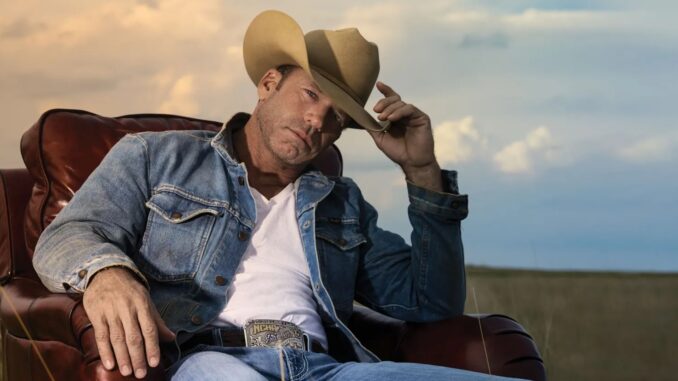
The Shifting Sands of the Yellowstone Empire: Where Vision Collides with Vocation
The announcement of Yellowstone‘s conclusion after Season 5 sent a ripple of disbelief, then a wave of questions, through its colossal fanbase. How could a cultural juggernaut, a show that redefined television’s relationship with the American West, simply… end? The initial whispers blamed Kevin Costner’s alleged scheduling conflicts and a desire to pursue his passion project, Horizon. While these factors undoubtedly played a role, they are merely the visible tips of a much larger, more complex iceberg. To understand the real reason Yellowstone ended, one must delve into the very DNA of its creation: the unyielding vision of Taylor Sheridan, the immovable ambition of Kevin Costner, and the ultimate, inevitable collision when two titans claim dominion over their own artistic destinies.
Imagine Yellowstone not just as a television show, but as a grand, sprawling ranch – much like the Duttons’ own. Taylor Sheridan is the visionary architect and the relentless foreman, building new fences, expanding territories, and demanding unwavering dedication from his crew. His creative output is legendary, almost dizzying. While Yellowstone was flourishing, he was simultaneously birthing 1883, 1923, Tulsa King, Mayor of Kingstown, Lawmen: Bass Reeves, and more. He wasn’t just writing episodes; he was constructing an entire cinematic universe, a testament to his boundless narrative energy and control. For Sheridan, every character, every storyline, every actor’s commitment is a vital brick in this ever-expanding empire. He writes with a singular, often uncompromising, vision, and he expects the same level of devotion from those who bring it to life. A character like John Dutton, the patriarch of the empire, wasn’t just a role; he was a foundational pillar, requiring immense time, presence, and focus.
Now, picture Kevin Costner, a cinematic titan in his own right, not merely an employee on the ranch, but a seasoned cowboy with his own cherished mustang. Costner’s career spans decades, marked by iconic roles and, significantly, his own directorial passion projects, most notably Dances with Wolves and now the multi-part Western epic, Horizon. This wasn’t a sudden whim; Horizon had been a lifelong dream, a story he had nurtured for decades, pouring his own resources and immense artistic will into its realization. For Costner, Yellowstone was a highly successful, creatively engaging chapter, but it was not the sum total of his artistic ambition. He had another, deeply personal, cinematic range he yearned to explore and conquer.
The “real reason” Yellowstone ended, then, is less about blame and more about the inevitable clash of these two equally powerful, equally valid artistic priorities. It’s the irresistible force of Sheridan’s ever-growing universe meeting the immovable object of Costner’s deeply personal, long-gestating magnum opus.
Sheridan, in interviews, has illustrated this through the practicalities of television production. A show of Yellowstone‘s scale requires meticulous planning, a rigid shooting schedule, and a cast willing to dedicate substantial chunks of their year to the project. When a lead actor, especially one of John Dutton’s centrality, expresses a desire to significantly reduce their availability – cutting down from a month or more to mere weeks – it doesn’t just create a scheduling headache; it fundamentally alters the narrative trajectory. How do you tell the story of the Dutton ranch, centered on its patriarch, when the patriarch is only sporadically present? Sheridan, as the architect, couldn’t simply build around a missing foundation. He needed John Dutton to be there, both physically and narratively, for the story he intended to tell in its final, climactic act.
Costner’s commitment to Horizon wasn’t a dismissal of Yellowstone; it was a declaration of his own artistic autonomy, a testament to a different, equally profound, creative calling. He wasn’t trying to be difficult; he was pursuing a dream that, for him, transcended any single television series, no matter how successful.
Thus, the ending of Yellowstone wasn’t a scandal; it was a necessary, albeit painful, amputation born of irreconcilable creative and professional commitments. Sheridan couldn’t compromise his vision for the final season’s narrative integrity, nor could Costner abandon his own deeply held dream. The options became stark: either severely diminish John Dutton’s role, which would unsatisfyingly deflate the show’s core, or bring the main narrative to a close and pivot to extensions of the universe where Sheridan held complete creative control.
In the end, Taylor Sheridan’s revelation is not a finger-pointing exercise but a pragmatic acknowledgment of the fundamental incompatibility that emerged. Yellowstone concluded not because of a failure of artistic quality or fan interest, but because the foundational pillars – the combined, undivided commitment of its visionary creator and its leading star – could no longer stand in perfect alignment. It’s a bittersweet testament to the power of individual artistic ambition, a reminder that even the grandest empires sometimes fracture when their most powerful architects choose divergent paths. The Dutton empire may be settling, but the Yellowstone universe, under Sheridan’s watchful eye, continues to expand, illustrating that sometimes, an ending is merely a different kind of beginning.
